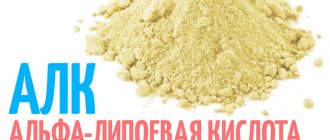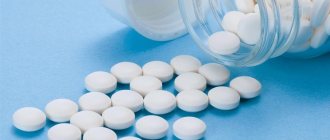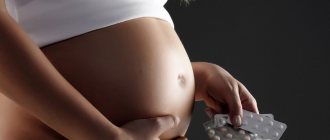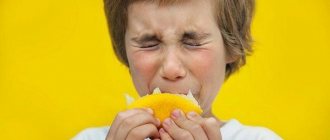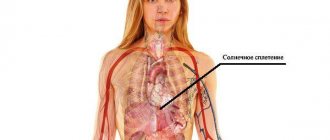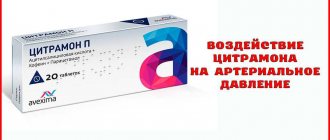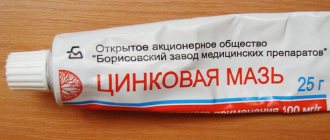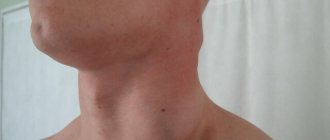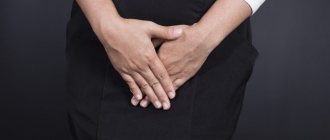Nowadays, there are a huge number of different medicines that are designed to combat various diseases. Thanks to the efforts of scientists, experiments and research, our society can be content with a very wide range of medicines that are sold in pharmacies.
There are many drugs that are not well known to the average user. The reasons for their unpopularity may be their recent appearance on the market, insufficient advertising or overpriced products. Most people tend to be of the opinion that the best is what has already been tested over the years.
One of the most famous remedies used in medicine, which is truly time-tested, can be considered boric acid. This remedy has long been used in both traditional and folk medicine. This drug owes its popularity to its main advantage - the maximum positive effect of its use at a low cost.
Boric acid has long proven itself to be a very effective medicine that is used in the fight against various ailments . Also, do not forget that this acid combines well with other components and allows you to add it as an ingredient to creams, ointments and pastes. What this acid may be needed for and how it is used in medicine will be discussed later in this article.
What is boric acid
It is recommended to use local antiseptics against pathogenic flora, for example, for wounds and scratches. Boric acid is just such a medical preparation that has pronounced bactericidal, disinfectant, astringent, and anti-inflammatory properties directly on the site of pathology. Its chemical formula is H₃BO₃. The action is aimed at exterminating protozoa, skin parasites, and bacteria. A distinctive feature is the ability to accumulate in the upper layer of the epidermis and prevent the development of pathogenic flora.
Contraindications
It is highly not recommended to use this type of acid for people who suffer from impaired kidney function, women during pregnancy and lactation, in childhood and infancy, as well as in case of intolerance to the components. In addition, preparations of this acid are not recommended for use on large areas of the body.
Boric acid - application
This antiseptic drug has several forms of release, including powder, medicinal solution, ointment. If the powder form is indicated to be prepared immediately before use, then the bactericidal medicinal ointment is best stored in the refrigerator, according to the expiration date. The use of boric acid is appropriate for the following clinical pictures:
- extensive skin lesions of an infectious nature;
- in complex treatment of conjunctivitis, blepharitis;
- intensive therapy for pediculosis;
- inflammatory processes ENT practices;
- infectious lesions of the mucous membranes.
Use during pregnancy
A pregnant woman should know some nuances regarding boric alcohol in the ears, namely:
- Due to the fact that boric acid is a toxic substance and can be absorbed into the blood with prolonged use, pregnant and lactating women are strictly contraindicated from using the drug in the ears.
- If you experience acute ear pain during pregnancy, you should consult a doctor who will prescribe more modern and safer ear drops,
- You should not delay visiting a doctor, since as the inflammatory process progresses, you may need oral antibiotics, which is not always beneficial for the unborn baby, and at the onset of otitis media, the chances that the inflammation can be dealt with only with ear drops are quite high.
In ear
If the ear canal begins to hurt, you should not endure such lumbago, it’s time to put this time-tested antiseptic into practice. Boric acid is instilled into the ears only on the recommendation of an otolaryngologist, otherwise such a procedure can harm health and cause complications. If there are no medical contraindications, the doctor gives valuable recommendations. Treatment of the ear with boric acid involves two directions for using an alcohol solution:
- Use as drops, performing 2 emissions from a pipette into each ear canal. Perform this home procedure up to 3-4 times a day until the symptoms of pain completely disappear.
- Pre-moisten a cotton swab and then temporarily place it in the ear canal where it hurts. The composition will begin to act immediately, and the unpleasant sensations will subside within half an hour. For both cases, it is important to discuss the question of whether boric acid can be dripped into the ear individually with an otolaryngologist.
- How to treat foot fungus at home with folk remedies: recipes
- Sour cream for the face - benefits and harm
- How to treat foot fungus with folk remedies: methods and recipes
Side effects
Side effects with proper use of the drug rarely develop, but still, with prolonged use of boric alcohol in the ear, conditions such as:
- convulsions,
- nausea,
- vomit,
- diarrhea,
- confusion,
- decreased amount of urine,
- toxic shock.
It should be recalled that boric acid is a poison and, if accidentally or intentionally ingested, can cause severe dysfunction of internal organs, including death.
Can complications arise?
Complications can develop if the patient has a perforation of the eardrum, since alcohol can enter the middle ear cavity and cause a burn to the mucous membrane of the eardrum, which can prolong the inflammatory process in the middle ear and increase the duration of treatment.
Long-term healing perforation in this case leads to chronicity of the process and gradual hearing loss.
For acne
For severe acne, this remedy, proven by generations, is also indicated, which costs a penny in the pharmacy. Boric acid for acne on the face is a publicly available method, but it is first important to make sure that the body is not hypersensitive to the active substances. Dermatologists advise using an alcohol tincture, which can effectively treat visible foci of pathology. It will be possible to completely get rid of acne in the shortest possible time, since the medicinal composition has a drying, anti-inflammatory, and bactericidal effect.
Basic data
Many chemicals are used in the fight against cockroaches, but only boric acid has not lost its relevance over many years of use. It has a special effect on insects that are unable to resist it.
Boric acid is defined in chemistry as a weak acid, the chemical formula is H3BO3. It has the appearance of white crystals in the form of scales, tasteless and odorless. It is poorly soluble in water. The melting point is 1700C, at which the structure of the substance and its chemical composition change.
Boric acid is extracted from hot springs, a special mineral - sassolin, which contains boron. There are not many reserves of pure substances in nature. Widely used:
- in industry;
- nuclear energy;
- jewelry making;
- medicine;
- photos;
- ceramics production;
- as a fertilizer.
In the household it successfully fights cockroaches; in gardens it is effectively used against red ants. The widespread use of boric acid is due to its properties. Natural origin makes it more popular, since the product is well tolerated and does not cause allergies.
For eyes
Since the mucous membranes are highly sensitive, doctors advise using only an aqueous solution, which is also effective against increased activity of pathogenic flora. Boric acid in the eyes is appropriate for conjunctivitis; it can be used at home only after an individual consultation with an ophthalmologist. If you drop 2 drops on each eye, the inflammatory process weakens within 2-3 days. Use the medicine until the symptoms of the disease completely disappear.
The real help of this medication is appropriate against the background of local use of antibiotics. This auxiliary agent accelerates the therapeutic effect and ensures rapid recovery for an adult patient or child. The instructions indicate contraindications and side effects, which you should read carefully before starting the course. This is especially true for interested patients during pregnancy.
Methods of using the product in medicine
Boric acid is used for medicinal purposes both in the form of a solution and powder. A particular product is used effectively not only as a means for topical use, wound treatment, douching, but also as a preparation for oral use. It should be noted here that the component is well absorbed through the skin and quickly penetrates the bloodstream, providing a comprehensive antiseptic effect. At the same time, when using the drug for different purposes, you need to carefully read the instructions, since the method of using the drug in each individual case may be different. For this reason, we present a list of situations in which the use of boric acid will be most effective.
How to drip boric acid into the ear for severe pain
Despite the fact that some people doubt whether boric acid can be dripped into the ear, it is a fairly safe and very effective procedure. This remedy treats ear canal infections, otitis media, and is also used for severe ear pain. In order for the treatment process to be as effective as possible, it is necessary to use boric acid correctly, and therefore the entire therapeutic process is presented below in stages:
- it is necessary to cleanse the ear canal of wax, for which hydrogen peroxide is used, which must be injected into each ear five drops;
- now, using a cotton swab, remove excess moisture from the ear canal, after which you can begin treatment with boric acid;
- The boric solution must be held in your hand for several minutes so that the liquid reaches body temperature, and then tilt your head back and inject 3 drops of acid into the sore ear;
- after instillation, you need to lie down with your head thrown back for at least 10 minutes, and then put a piece of cotton wool into the auricle, which will allow you to remove excess product;
- During the day, it is necessary to make at least three instillations as part of a weekly treatment course.
How to make a compress on the ear for otitis media
Compresses for otitis are an integral part of treatment, which allows you to increase blood flow to the sore ear, as a result of which the therapeutic effect is realized much faster. In order to carry out the procedure, you will need to prepare gauze, which must be rolled in 4-6 layers to form a flap measuring 10 by 10 centimeters. This gauze cloth must be soaked in boric acid diluted in alcohol, after which an incision is made in the center of the fabric pad so that the ear passes through it.
This is interesting: What is the advantage between Powder and Multipower?
It should be remembered that a film is placed on top of the boron compress, which does not allow moisture to evaporate. The top of the two-layer structure is insulated with a towel or woolen scarf. The warming compress must be maintained for half an hour as part of the four-day treatment process.
Using the solution to treat the eyes
Boric acid is an effective therapeutic and prophylactic agent that allows you to prevent and get rid of most ophthalmological diseases of infectious viral etymology. This particular instrument is especially often used to treat conjunctivitis and inflammation of the retina. To carry out the procedure, you need to lower your face into a container with a solution, so that the eye is immersed in the liquid, after which you need to blink in boric acid.
In this regard, below we provide information on how to dilute boric acid for eye washing:
- you need to purchase boric acid in powder;
- it is necessary to prepare boiled or distilled water;
- For 300 milliliters of liquid you need to add a teaspoon of dry raw materials, then mix the ingredients thoroughly and begin treatment.
How to use for foot odor and sweating
As you know, the main cause of unpleasant foot odor is microbes. These microorganisms settle and actively multiply in a damp environment, for example in sneakers, if they are left wet from precipitation or sweat for some time. For this reason, in order to say goodbye to the aroma emanating from feet and shoes forever, you need to thoroughly dry your sneakers and boots, and then pour one or two bags of boric acid into them, leaving them overnight. In the morning, the powder must be poured out of the shoes, after which they can be worn again, since boric acid will kill all microorganisms and eliminate the smell.
Powder for nail and foot fungus
If fungus affects the skin of the feet, as well as the nail plates, you can use a simple remedy that is not inherently an antifungal drug, but provides an excellent therapeutic result, namely boric acid in powder form. To carry out the healing process, boric acid is used as an active substance for preparing baths.
To carry out the procedure, you need to take a small amount of water so that it covers all the affected areas into a basin, and then pour 2-3 teaspoons of the described drug into it. The contents of the container should be mixed until it is completely dissolved, after which you need to lower your feet into the bath and hold for 20 minutes. This procedure must be carried out every three days until complete recovery.
From cockroaches
If there are harmful insects at home, you should not spend money on expensive products. In practice, a proven folk recipe for preparing poison really helps. Boric acid is especially effective against cockroaches; the main thing is not to violate the proportions or change the ingredients. The folk recipe for creating bait to destroy such annoying pests is as follows:
- Break the egg, remove only the raw yolk, which causes increased appetite among pests. To kill cockroaches, grind it in a bowl and add 50 grams of powder. Bring the mixture to the consistency of dough, then prepare portioned balls from it, which are then placed in the corners of the apartment. The poison acts instantly.
- To remove pests, you can boil an egg, one raw potato, add boron hydroxide, thereby preparing a poisonous puree to remove household pests. Form the composition into balls, which can be used at home to effectively poison cockroaches.
- Inexpensive remedies for nail fungus on toes and hands
- Instructions for the use of borax in glycerin - indications, antiseptic and antimycotic properties, analogues
- Miliaria in adults - causes and symptoms. Treatment of prickly heat at home with ointments and folk remedies
Overdose
If the acid is accidentally drunk, the patient must thoroughly rinse the stomach. It is preferable to use a probe for this. Saline solutions and enterosorbents are also supplied internally. After these procedures, the patient is prescribed symptomatic therapy. In case of severe overdose, it is necessary to maximally support human functions important for a full life, perform peritoneal dialysis and blood transfusions if necessary.
Signs of an overdose of this type of acid are diarrhea, erythematosis, stomatitis, depression of brain function, oliguria, circulatory disorders, and in some situations, shock or coma develops.
If long-term use of this type of acid is expected, after some time symptoms of acute intoxication may occur - exhaustion of the body, eczema, swelling, anemia, menstrual irregularities and even convulsions. In this case, you should immediately stop using boron and perform symptomatic treatment.
From ants
If even smaller insects appear in a living room, it is important for a person to exterminate them in a timely manner. Boric acid against ants in the apartment is an effective poison, the recipe for which can be prepared at home. The basis is minced meat or fish, bread, boiled potatoes or eggs, to which a poisonous ingredient is added. If you don’t have time to prepare the balls, spraying the room will help, but first, according to the instructions, it needs to be diluted with water. The poisoning of parasites is immediate, the main thing is to first remove the child and animals from the premises.
Boron-containing drugs
Fertilizers are used to improve the yield and quality of fruits.
- Boric superphosphate is produced in the form of gray water-soluble granules. The product is produced in standard acid concentration (1-3%) and double acid concentration (6-8%). The drug enriches the soil before digging.
- Bornadatolite fertilizer is a dry powder that dissolves completely in liquid. The chemical contains 16% active substance. The rate for one-time application is 5 g per 1 sq. m. To prepare a nutrient solution, take 1 g per 0.5 liter of water. For leaf spraying of plants, it is better to use borax. The cultures quickly absorb the crystalline sodium salt without leaving burns on the plates.
- Boric acid is produced in the form of a white powder and in the form of an alcohol solution. The drug is odorless, crystalline and poorly soluble in cold water. The concentration of the active substance is 17%. For soil applications, dilute 5 g of the product in a bucket of liquid. Ready-made complex formulations with microelements (“Basfoliar”, “Mag-bor”) are purchased as additional feeding.
- Boric ointment 5% is prescribed for extensive infectious lesions of the skin. The drug is not used in crop production.
From carbon deposits
Cleaning the outer walls of frying pans and pots gives the housewife a lot of trouble, since carbon deposits are very difficult to remove, especially if it gets under the handles. In order not to waste money on expensive household chemicals, powder or alcohol tincture can be used to wash such kitchen utensils. You don’t have to dilute the percentage composition, but it’s better to use rubber seals for washing dishes.
The boric acid solution acts instantly, so there is no need for additional salt or alkali. If necessary, the three components can be combined in one cleaning composition, mixed thoroughly, and used to clean different surfaces. Boric acid for removing carbon deposits is an affordable and high-quality dishwashing product.
Composition and release form
This substance is classified as a weak acid. It consists of transparent, odorless crystal flakes. The product is produced in the following forms:
- powder with a sour taste in jars or packages;
- aqueous or alcoholic liquid;
- bottles in the form of droppers;
- ointment 5 or 10%.
A specific form of boric acid is selected taking into account the characteristics of the disease that has arisen. The application algorithm may also vary.
Boric acid price
Boric powder is sold in pharmacies, like other forms of this medicine. Adults and children can take it, but only according to the instructions and recommendation of the attending physician. Prices are minimal, no prescription required. Therefore, this medicine replenishes almost every family medicine cabinet. The prices for this medical drug are as follows and depend on the form of release of pharmacological products:
| Product Name | Price, rubles |
| Powder form | 40 (price for disposable packaging) |
| Alcohol tincture | up to 100 |
| Acid | 50 |
Signs of deficiency and excess of boron in garden and vegetable plants
Deficiency of an important microelement negatively affects the immunity of crops. A shortage leads to the death of growing points, and pollen loses its ability to fertilize. You can recognize a deficiency in the area by the following symptoms:
- shrinking, curling of foliage;
- fruit deformation;
- death of the bark;
- necrosis on stems;
- weak flowering.
The harvest is poorly established; in pome-bearing plants, suberization is observed on the skin of fruits (pears, apples). If you don’t process the crops in your garden or vegetable garden in time, you may not get your vegetables and fruits.
With a lack of boron, root crops are affected by rot, and cabbage is covered with fungal scab.
If a farmer does not know how to use boric acid, he may not be able to calculate a safe dose. An excess of a substance is just as harmful as a deficiency. With an excess of microelements in the soil, ripening occurs quickly, but the shelf life of the product deteriorates. The component provokes burns of the lower leaves. The plates curl from the edges to the center, turn yellow and die.
What are the drug's indications and contraindications?
The drug can be prescribed only after consultation with an otolaryngologist and an in-person examination. If we instill the drug into the ear, we should completely exclude perforation of the eardrum. This cannot be done without examining the ear, and the child is unable to adequately describe his sensations and symptoms. Injecting a solution into the ear when the integrity of the membrane is damaged will lead to serious consequences:
- penetration of infection into the inner ear;
- toxic effects on labyrinthine tissue;
- burn of internal tissues.
In children, the drug is used with caution, strictly without exceeding the dosage. It is better not to prescribe it to children under 1-2 years of age, because there are many safer remedies. The danger is caused by the accumulation of the substance in tissues, which can negatively affect the child’s body.
Most often, the medicine is prescribed to children over 10 years of age and adults.
The main indication for the use of boric acid 3 percent is otitis externa, or inflammation of the auricle and external auditory canal. For otitis media, it is highly undesirable to use the medicine. The pharmaceutical product is also prescribed to patients with a chronic form of otitis externa, including those with purulent symptoms. Strict contraindications are:
- age up to one year;
- allergic reactions to the substance;
- kidney disease;
Face masks
For long-lasting results, masks with boric acid are prepared, which are very popular. The result is especially noticeable when fighting teenage acne. If the inflammatory process is located in the deep layers of the skin, it will take longer to eliminate it. For a quick effect and removal of large inflamed formations, as well as pustular processes, it is better to consult a specialist and not self-medicate.
With cucumber against oily shine
For good hydration and whitening, add a tablespoon of chopped fresh cucumber to a quarter of a teaspoon of acid. The mixture is slightly heated and applied warm to a clean face for 10-15 minutes. Such a simple and affordable mask will relieve not only rashes, but also excess oil on the face.
With aloe against rashes
Aloe pulp and a few drops of boric acid are added to cucumber juice. In addition to intense hydration, the procedure, when used regularly, eliminates all rashes on the face.
Mask with kefir for blackheads
You will need 1 tablespoon of crushed oatmeal, up to 4 drops of boric acid, and also a little kefir to make the mixture thick.
Combining the drug
For better results, the acid is combined with other useful elements. For example, as part of masks, the substance will not dry out the skin and does not cause irritation, but it also effectively fights any rash.
What products contain acid?
Boric acid is an excellent antiseptic, but the concentrated solution is only suitable for external use. Since the substance rarely causes irritation, it is added to various ointments, water- or alcohol-based solutions. Boric ointment is used as an antiseptic and drying agent, but you need to be careful with its use and avoid contact with mucous membranes.
Acid is also contained in teymur paste, which is suitable for combating diaper rash. The alcohol solution of the chemical includes acid and ethyl alcohol and is widely used to treat ear infections. Boric acid exhibits good antimicrobial and antiseptic effects. The ease of use and availability of the product allow it to be popular today among many modern cosmetic preparations for combating rashes.
Overdose and its consequences
If you do not follow the instructions and increase the dose of the drug, side effects often occur. Deterioration of skin condition is especially common in people with dry and sensitive skin. The substance is absorbed very quickly, especially through the delicate skin of children. If a child applies ointment or solution to a large area of his body, the consequences can be very serious. In case of overdose, the following conditions are possible:
- toxic effect (nausea, weakness, vomiting and diarrhea, dizziness);
- severe dry skin, irritation.
Boric acid successfully fights the cause of rashes, penetrating deeply into the skin, and disinfects it, removing harmful microorganisms. A course of treatment will help get rid of acne and any pimples. Although the substance does not provide an immediate effect, daily treatments based on boric acid will gently and thoroughly cleanse the skin. Instructions for use of the drug explain its positive effect on the skin. If you perform the procedure daily, taking into account the indications and contraindications of acid, you can get healthy, beautiful skin and forget about rashes for a long time.
How does it help and what does it treat?
Boric acid has antimicrobial properties. It coagulates the proteins of the microbial cell, thereby disrupting the permeability of its biological membranes, which leads to a delay in the growth and development of pathogenic bacteria and fungi. Given these properties, boric acid can be used in the following situations:
- Dermatitis.
- Eczema.
- Pyoderma.
- Diaper rash.
In addition to dermatological pathology, aqueous solutions are used in the treatment of conjunctivitis, and as ear drops for acute and chronic otitis. They are sometimes recommended for use in colpitis.
Indications in cosmetology
The substance can also be used for cosmetic purposes. Boric acid is used to combat some aesthetic imperfections on the skin of the face:
- Acne.
- Excess fat content.
- Dark spots.
Using acid, you can cleanse the skin of impurities and blackheads, dry out inflammatory elements and prevent their further appearance. Solutions are useful for strengthening hair and nails, in the treatment of hyperhidrosis (excessive sweating).
Boric acid is a simple and affordable disinfectant that can be used in dermatology and cosmetology.
Side effects
Before using boric alcohol to treat otitis media, you must ensure the integrity of the eardrum. Of course, you can’t do this on your own, so you need to contact a specialist who can prescribe a more comprehensive treatment for the disease. When the inflammatory process reaches its peak, pus begins to put pressure on the eardrum. All this is accompanied by severe pain, and the eardrum itself may burst. In this case, pus begins to come out of the ear.
Universal fertilizer
In order for the future vegetable crop to take root well and then germinate/bear fruit, it is advisable to pour a solution of boric acid into the beds. It is prepared in a ratio of 0.2 g of powder per 1 liter of water. Composition consumption per 10 m2 is 10 liters. The beds spilled with the solution need to be loosened and only then sow the vegetables.
Important: boric acid dissolves only in warm or hot water. Only then is the concentrate mixed with the cold one.
special instructions
The instructions for use contain special instructions that should not be ignored when using the medicine:
- When absorbed, a toxic drug can lead to negative systemic effects, so boric alcohol should not be used in children at an early age (deaths are possible).
- Do not let the three percent alcohol solution get into your eyes, otherwise wipe with gauze or a cotton swab and rinse with warm water.
- Boric acid negatively affects the developing fetus during pregnancy; it is also prohibited during lactation because it is toxic.
- The drug is contraindicated in children under one year of age.
- Does not affect the speed of psychomotor reactions, and is not prohibited for use when driving vehicles or working with dangerous mechanisms.
How to store, compatibility with other substances
The shelf life of the powder or liquid is indicated on the packaging. When purchasing, make sure that you have at least a year left before the end of use. The standard period is 3 years.
General storage conditions: in a dark place. In a room where the temperature does not exceed 25-30 degrees. High humidity is not allowed. If the drug has been opened, its properties will not be lost if it is well sealed in a plastic bag.
The compatibility of boric acid with other fertilizers is characterized as excellent. Before combining two or more drugs, study the instructions for each of them. Compatibility testing is also recommended. The only condition that must be observed is that the dosage of boric acid is reduced by half.
Use in mineral water
Healing mineral waters contain a huge amount of mineral compounds that are so necessary for the human body. It is worth noting that they should be used either exclusively for medicinal purposes or irregularly to maintain good health.
But before consuming medicinal waters, it is imperative to consult with relevant specialists. In addition to substances such as iodine, iron, various organic compounds, mineral waters also contain boron, which is converted to boric acid. Orthoboric acid in mineral waters can be contained in quantities from 35 to 60 mg per liter of water.
This compound is widely used in human life, but it should be handled carefully so that it only benefits health.
Analogues and other information about treatment
For the treatment of ear diseases in children, other agents based on the substance, as well as other antiseptics, can be used:
| Medicine | Compound | Price, rubles |
| Otindole | Boric acid, novocaine | 115 |
| Otolorin | Boric acid, procaine | 220 |
| Otipax | Lidocaine, phenazone | 320 |
| Otinum | Choline salicylate | 260 |
| Anauran | Polymyxin, lidocaine, neomycin | 370 |
| Polydexa | Polymyxin, dexamethasone, neomycin | 320 |
INDICATIONS FOR USE
used to treat a number of conjunctivitis (inflammation of the outer membrane of the eye), various dermatitis (inflammation of the skin), otitis (inflammation of the ear cavity).
Application
Contraindicated for patients with impaired renal function, nursing mothers for treating mammary glands, children (including newborns), pregnant women and persons with individual intolerance. Boric acid preparations should not be applied to large areas of the body.
Boric acid has pronounced antiseptic activity. When applied topically in the form of liniment, paste or ointment, it has anti-pediculosis, keratolytic, disinfectant, drying and deodorizing effects.
Thanks to these properties, boric acid preparations in the form of pastes and ointments are used for:
- Pediculosis;
- Neuralgia and myositis (boron-zinc-naphthalan paste);
- Sweating (Teymurov paste).
Solidol ointment is used for psoriasis.
The use of boric acid in the form of aqueous solutions is indicated for conjunctivitis (2% solution), inflammatory lesions of the skin (dermatitis) and weeping eczema (3% solution).
Alcohol solutions are used for diaper rash, as well as acute and chronic inflammatory diseases of the ears, purulent lesions of the skin caused by the introduction of pyogenic cocci into it.
A 10% solution of boric acid in glycerin is prescribed for colpitis, pyoderma and diaper rash.
For patients who have undergone surgery on the middle ear, in some cases the use of Boric acid by insufflation (injection) of powder into the ear cavity is indicated.
According to the instructions, contraindications to the drug are:
- Hypersensitivity;
- Perforation of the eardrum;
- Chronic renal failure;
- Pregnancy;
- Lactation;
- Childhood.
What is boric acid used for? The use of 3% boric acid is advisable for infectious pathologies of the skin and mucous membranes. The description of the drug indicates indications for use:
- The acute form of otitis media is an infectious pathology of the middle/outer ear. An acid solution is used, it must be diluted in certain proportions.
- Skin infections – fungus.
- Purulent and inflammatory skin diseases.
- Infectious lesions of the organs of vision.
- Pediculosis.
- Scabies therapy (in complex treatment along with other medications).
- Colpitis.
Boric soap is used for acne, for deep cleansing of the skin, restoring lipid balance, and eliminating pigmentation. The cosmetic product protects against skin infection, improves the functionality of the sebaceous glands, destroys fungal and bacterial microflora, and is characterized by a drying effect.
We found out why boric acid is needed. The component is quickly absorbed through the skin and mucous membranes and is slowly eliminated from the human body, therefore during treatment it is necessary to strictly adhere to the dosage recommended by the instructions for use or by the doctor.
Features of application:
- Dermatitis, eczema. In this case, the acid must be used as a compress. Use boric acid powder, dilute immediately before use;
- For otitis media, turundas soaked in medicinal liquid are made;
- To get rid of acne and blackheads, apply the solution to a cotton pad and wipe your face twice a day.
You can use another “chatterbox” recipe. It helps cleanse facial skin, eliminates acne, open comedones, and excessive oily skin. Recipe: 50 ml of boric and salicylic acid, 7 g of Streptocide powder and the same amount of purified sulfur.
If boric acid does not enter the human body, it is harmless. Once inside, it is excreted by the kidneys, but much more slowly than it is absorbed into the blood.
Among the contraindications to the use of boric acid:
- pregnancy;
- lactation period.
You should not listen to grandmothers and use this substance to rinse bottles, nipples before feeding and lotions. This will not harm an adult, but if it accumulates in a child, it can cause seizures and developmental disorders.
People with kidney disease should also replace this drug with other, less toxic drugs.
If you use boric acid wisely and prevent it from entering the body, it can be used in all cases as prescribed by a doctor. The advantage of boric acid is its low price and good antibacterial properties.
- Boric acid in the form of a 1–4% aqueous solution is used for lotions on weeping lesions for dermatitis, pyoderma and eczema, washing for diaper rash, and conjunctivitis; A 2% aqueous solution of boric acid is used to wash the skin for red acne; in 2–4% aqueous solutions for rinsing the mouth, pharynx and pharynx and for washing the urinary tract.
- A saturated acid solution (two teaspoons of powder per glass of water) is used to treat pityriasis versicolor, rubbing into the lesions once a day for a week. After the rash disappears, the solution is continued to be rubbed into the former lesions 1–2 times a week for 1–2 months.
- Alcohol solutions in concentrations of 0.5%, 1%, 2%, 3%, 5% are prepared in 70% ethyl alcohol and are used as an antipruritic and antiseptic for wiping healthy areas of skin around foci of pyoderma, weeping eczema, dermatitis and diaper rash (in adults).
- In the form of a powder for blowing into the ear, as well as in a 3–5% alcohol solution as ear drops (3–5 drops into the sore ear 2–3 times a day) and for wetting turundas in acute and chronic otitis media in the presence of sharply thickened mucosa membranes with signs of inflammation.
- Ointments containing 2–10% boric acid (5–10% boric ointment, boron-zinc ointment), alcohol solutions and powders serve as antipruritic and disinfectants for dermatoses that are in a progressive stage (exacerbation of psoriasis, neurodermatitis, etc. ), eczema, dermatomycosis. 5% ointment is used for dry and cracked skin.
- In the early stages of hyperhidrosis or its prevention, foot baths of boric acid and citric acid are used.
- As a powder, boric acid powder is used in patients with fungal diseases of the feet, especially intertriginous forms of interdigital mycosis, with excessive sweating of the feet, and diaper rash.
We suggest you read: Potato diseases - recognize the enemy by sight
Boric acid is contraindicated for children (including newborns).
Individual intolerance. Boric ointment is not used for acute inflammatory diseases of skin areas covered with hair.
Boric acid almost does not irritate tissues and does not coagulate proteins. When absorbed from a large area of skin, boric acid (for example, as part of powders) can cause intoxication of the body, especially in children.
Accidental ingestion of large amounts of boric acid causes gastroenteritis and collapse.
Boric acid is used for the following diseases:
- conjunctivitis;
- weeping eczema;
- dermatitis;
- diaper rash;
- dermatomycosis;
- purulent rashes;
- otitis;
- vaginosis, vulvitis;
- pediculosis.
Indications for the use of boric acid are periodic skin diseases - rashes during puberty, acne, pimples. The list of things that boric acid treats also includes candida fungal infections.
Due to the antiseptic and disinfectant properties of boric acid, it is included in multicomponent antiseptics for skin treatment, powders and talcs, as a preservative in ointments.
Since boric acid is excreted exclusively by the kidneys, boric acid solution is contraindicated in patients suffering from pathologies of the kidneys and urinary system, for example, kidney stones, renal failure, stones in the ureters.
Boric acid is contraindicated for pregnant women; when breastfeeding, it is strictly forbidden to treat the mammary glands. Not used to treat newborns. Use with caution if it is necessary to treat a large area of skin.
Contraindications and adverse reactions
Indications for the use of a healing agent may vary, since boric acid is an antiseptic, and it also creates an anti-pediculosis and insecticidal effect. Let's figure out what boric acid is used for and what diseases it copes with:
- dermatitis;
- conjunctivitis;
- diaper rash on the skin;
- eczema;
- otitis in various forms;
- pyoderma;
- colpitis;
- pediculosis.
The remedy quickly relieves inflammation, redness and other unpleasant symptoms.
Regardless of the dosage form, the drug Boric acid is used only externally. It is applied to the area where the infectious inflammatory process is located. The following methods of using various dosage forms of the drug are distinguished:
- Alcohol solutions of 0.5%, 1%, 2% and 3% are used as drops in the ear for acute and chronic otitis (turundas /small narrow gauze swabs/, moistened with a solution, are inserted into the ear canal), as well as for treating affected areas skin with pyoderma (purulent inflammation of the skin), eczema, diaper rash. After operations on the middle ear, insufflation (insufflation using a powder blower) of boric acid powder is sometimes used.
- Prescribed as a 2% aqueous solution for washing the conjunctival sac (the cavity between the back surface of the eyelids and the front surface of the eyeball) for conjunctivitis (inflammation of the outer membrane of the eye); A 3% solution is used as a lotion for weeping eczema and dermatitis (inflammation of the skin).
- For head lice, apply 10-25 g of 5% ointment once to the scalp, rinse off with warm water after 20-30 minutes, and comb out thoroughly with a comb; for dry and cracked skin, apply the ointment to the skin as needed.
- A 10% solution in glycerin is used to lubricate affected areas of the skin during diaper rash, as well as colpitis (inflammation of the vagina).
We invite you to read: Garden pests: description and photo
Ointment - applied to the mucous membranes in an even thin layer; for conjunctivitis, a small amount of ointment is placed under the conjunctival sac. The ointment is applied 2 times a day.
Contraindications to the use of the drug are:
- Hypersensitivity of the patient to boric acid;
- Perforation of the eardrum;
- Renal dysfunction;
- Chronic renal failure;
- Pregnancy and lactation;
- Childhood.
I will briefly list where it is used, and I will tell you more about its use in medicine separately below. So, the main areas of application of boric acid:
- In medicine as an antiseptic.
- In agriculture as part of complex fertilizers. Can be used in conjunction with growth regulators of agricultural plants, for example, sugar beets, which leads to an increase in yield. The concentration used is 0.05%.
- In the production of fire retardants (fire retardants), for example, for impregnating wood.
- In the nuclear industry as a neutron absorber (when dissolved in a coolant).
- I came across a study that described the use of boric acid to impregnate wood, which would later be used in the design of radiation shielding for nuclear power plants to attenuate neutron radiation fluxes to levels safe for human health. At the same time, borated wood (as a cheaper material compared to others) can be used to protect against neutron fluxes of low and medium energies.
- As an insecticide to kill cockroaches and ants.
- For the production of enamels and special glasses (for example, laboratory glasses).
- In the production of fiberglass, fiberglass, fiberglass.
- In the food industry as a preservative E284 (in Russia it is not included in the list of permitted additives).
- In metallurgy.
- In jewelry.
Can boric acid be dripped into the ear? In otolaryngology, several types of ear pathologies can be distinguished, the treatment of which can be carried out using an aqueous or alcoholic solution of orthoboric acid. These include:
- furunculosis of the external auditory canal - inflammation in the hair follicles that occurs against the background of the development of staphylococcal flora. Boric acid for the ears is used by introducing cotton wool soaked in a solution into the ear canal;
- diffuse external otitis is a diffuse inflammation that occurs in the auditory canal, auricle and membrane. Boric acid for the ear is used for rinsing, helping to eliminate swelling and microbes in inflamed tissues;
- Otitis media - catarrhal processes in the ear cavity, mastoid process and eustachian tube. For ear pain, boric acid can be instilled directly into the ear canal or used to prepare warm compresses;
- otomycosis is an inflammation in the external ear canal caused by the development of fungal flora. A solution of boric acid for the ears is used for rinsing, which eliminates not only pathogens, but also eczematous rashes.
It should be understood that treatment of ENT diseases must be comprehensive. This is especially true for pathologies whose development was caused by bacteria.
The lack of antibacterial therapy can cause purulent processes in the ear cavity, which can lead to damage to the meninges.
In pediatric therapy, the drug is used extremely rarely, due to its toxicity. In medical practice, cases of death from an overdose of the drug have been recorded. Experts do not recommend using boric alcohol for the ears if:
- eardrum perforation;
- purulent processes;
- kidney and liver dysfunction;
- allergies to drug components;
- lactation and early pregnancy.
An overdose of the drug is indicated by clinical manifestations of severe intoxication, which include:
- nausea;
- gagging;
- diarrhea;
- peeling of the skin;
- headache;
- state of shock.
If the above symptoms occur, you should interrupt therapy and seek help from a specialist. Delayed medical attention can lead to the development of kidney disease.
